Feres Doctrine
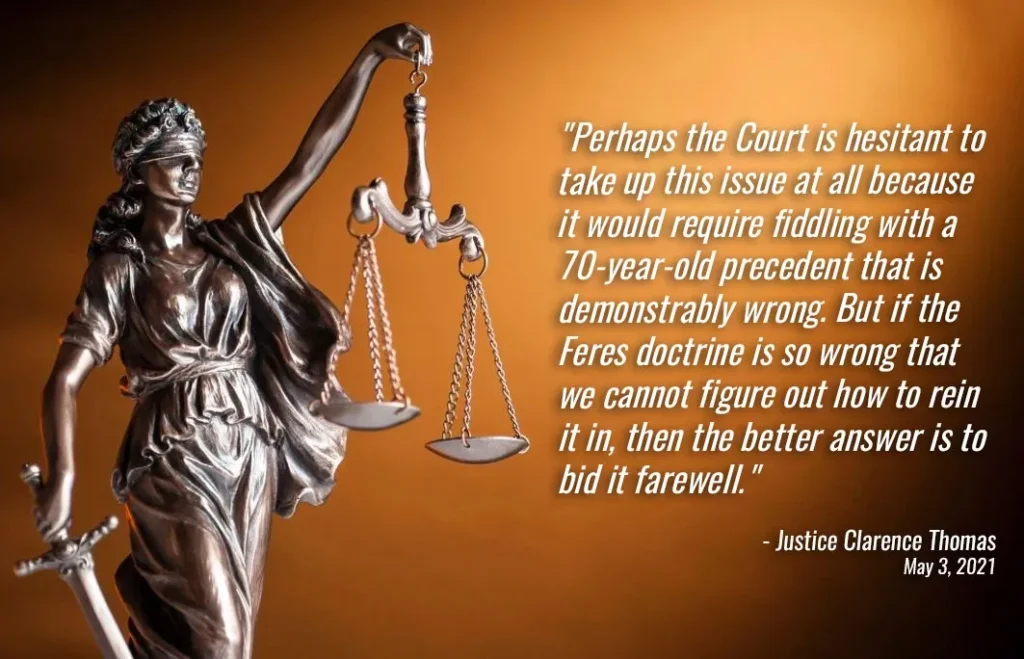
UNJUST, DANGEROUS AND OUTDATED
Did you know for over 70 years, Active Duty Service Members of the United States Armed Forces and their families have been unable to sue the United States Government for incidents leading up to serious injuries or death caused by medical malpractice and/or negligent military leadership decisions. For over 70 years there has been no true accountability.
This archaic doctrine comes from the 1950 U.S. Supreme Court case Feres v. United States, which resulted in the following ruling, which concluded the “…Government is not liable under the Federal Tort Claims Act for injuries to servicemen where the injuries arise out of or are in the course of activity incident to service. Without exception, the relationship of military personnel to the Government has been governed exclusively by federal law…”
WHAT IS THE FERES DOCTRINE?
We believe by telling the story of the 1947 Barracks Fire is key to understanding why the “Feres Doctrine” is an antiquated ruling being applied to our modern military. Readers and supporters need to have a clear understanding of the events leading up to the tragic fire which resulted in the 1950 US Supreme Court decision.
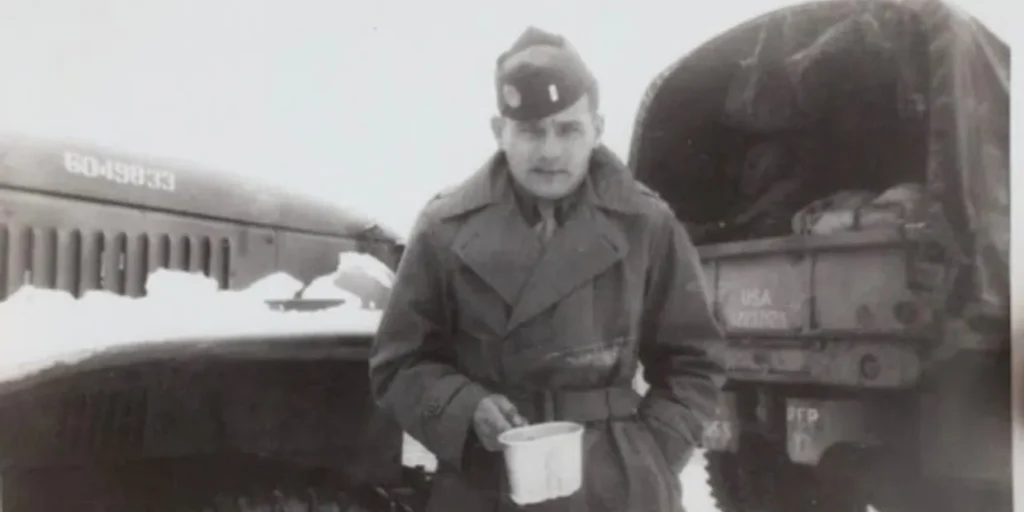
WHO WAS LIEUTENANT RUDOLPH FERES? (U.S. ARMY)
This page is dedicated to the memories of Lt. Rudolph Feres, Capt. Francis Turner, Capt. Robert Dodge, Lt. Robert Manly and Lt. Wallace Swilley. Each of these men were victims of the Pine Camp barracks fire. May one day they be allowed to rest in peace.
In the early hours of D-Day, Lt. Rudolph Feres, courageously parachuted into Normandy and fought his way through the hedgerows. He braved the freezing snow at the Battle of the Bulge and was eventually part of the Greatest Generation to liberate Europe. By 1947, the United States was attempting to limit the spread of Communism throughout the world, and in response, the Army planned Exercise Snowdrop.
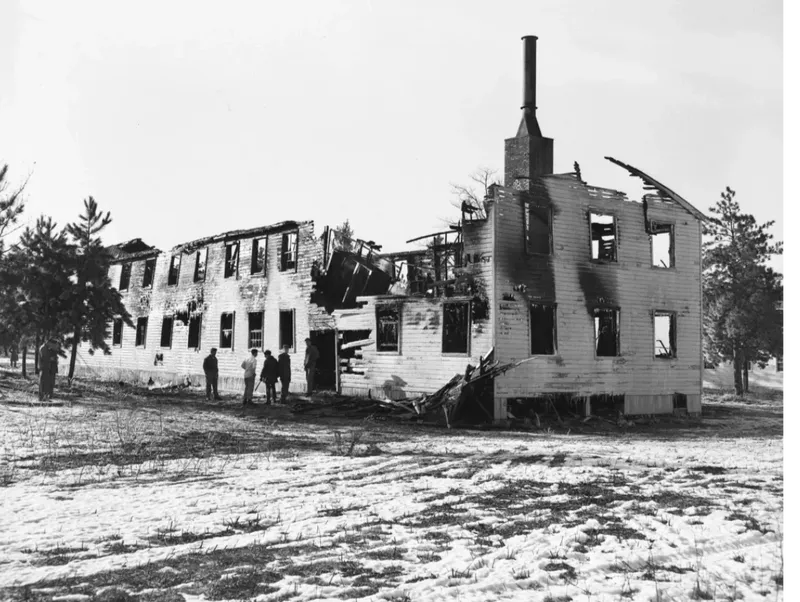
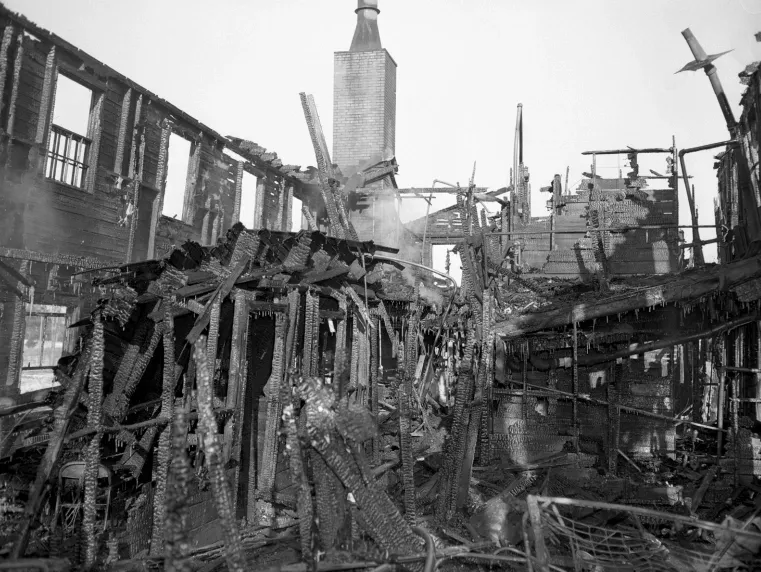
Lt. Feres, along with the other officers, were housed in a hastily built World War II barracks. The barracks were designed and built with little to no fire prevention or safety in mind. The main heating source for the barracks was a boiler located on the first floor across from both the main entrance and the only staircase in the building. In the early morning hours of December 10, 1947, an early morning fire engulfed the barracks, killing Lt. Rudolph Feres and several other officers.
In the aftermath of the tragic fire, some of the affected families sought recompense for their loss. The widows of Lt. Rudolph J. Feres, 1st Lt. Wallace H. Swilley, 1st Lt. Robert D. Manly and the mother of Capt. Francis H. Turner each sued the United States for negligence of a faulty heater.
Judge Stephen W. Brennan of the Northern New York District Court dismissed all four of the barracks fire cases brought to him in early 1949. Judge Brennan dismissed the Feres case, citing in his decision lack of established jurisdiction for hearing this suit. The case brought by Bernice Feres, the widow of Lt. Rudolph Feres, was the only one appealed to the level of the U.S. Supreme Court. Mrs. Feres appealed the February 10, 1949 District Court decision, bringing the case to the Second Circuit Court of Appeals in October 1949. The District Court decision was upheld by the Court of Appeals in November 1949. Mrs. Feres then appealed to the U.S. Supreme Court. The Feres case was one of three combined for the Supreme Court appeal, all addressing the liability limits of the United States under the Federal Tort Claims Act in regard to military personnel injured by other military personnel during activities incident to service period.
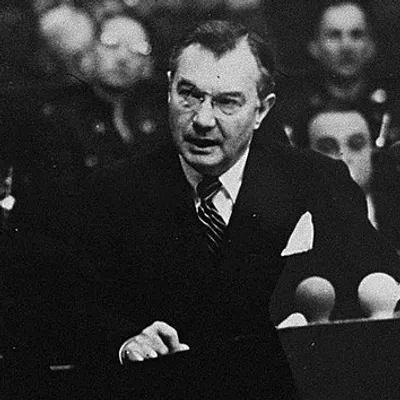

The other two cases were Griggs v. United States, involving a wrongful death claim due to medical malpractice by Army physicians, and Jefferson v. United States, seeking medical malpractice damages for injuries received by an Army soldier resulting from an operation while on active duty. In December 1950, the U.S. Supreme Court dismissed all three claims. Also known as the Feres Doctrine, this ruling effectively prevents military personnel from pursuing claims under the Federal Tort Claims Act for injuries incurred from activities incident to service.
It also bars family members from filing wrongful death suits when a service member is killed. For over 70 years the Feres Doctrine has been used as a shield by the Department of Defense to hide behind.
True accountability for military medical malpractice and negligent leadership decisions has been non-existent for members of today’s Armed Forces. The assumption the Feres Doctrine ruling fits in today’s modern military is antiquated thinking.
In simple terms, it’s like comparing the manufacturing techniques and safety equipment of a 1950 Ford pickup to a modern day Ford pickup. They don’t compare, and don’t even come close.
The Feres Doctrine needs to be a relic of the past. Lt. Rudolph Feres’, name and memory should stop being associated with the non-accountability it has become known for. The Feres Doctrine should be referred to for what it really is :The Military Non-Accountability Doctrine .
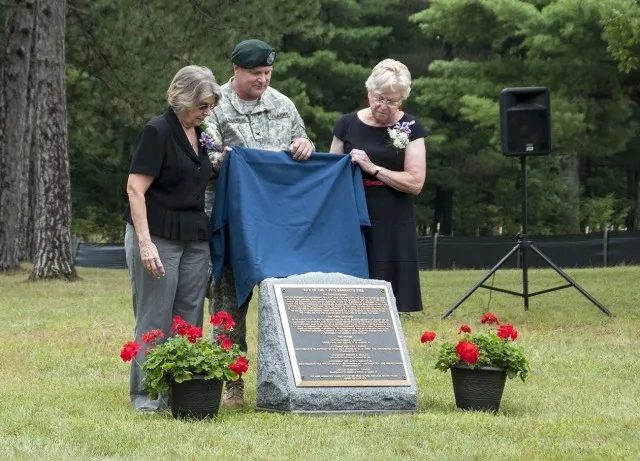
Honoring Those Who Perished
In 2013, a memorial was unveiled by Capt. Francis Turner’s two daughters at the site of the Camp Fire. The memorial plaque was dedicated to the memory of the men who lost their lives in the barracks fire: Capts. Robert Dodge and Francis Turner, and Lts. Robert Manly, Wallace Swilley and Rudolph Feres.
THE FERES DOCTRINE’S LEGAL HISTORY

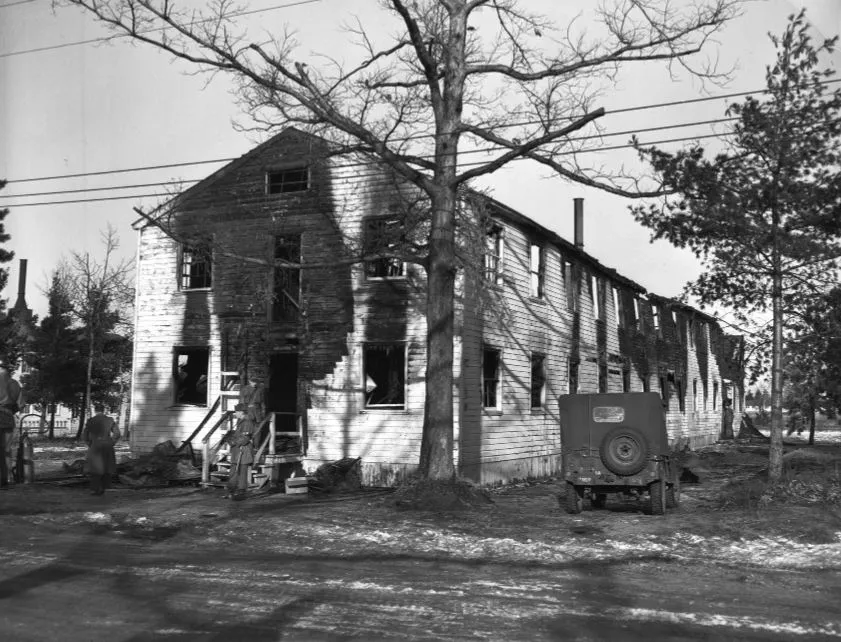
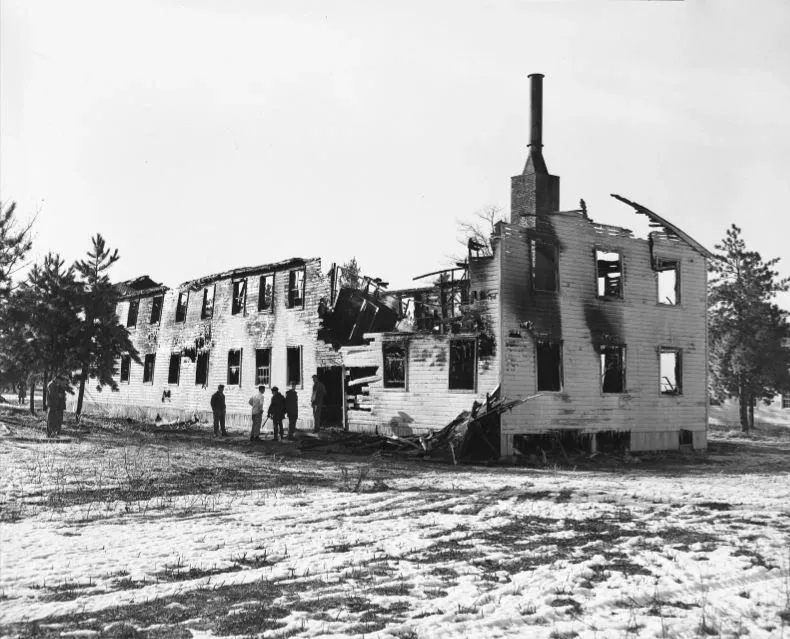
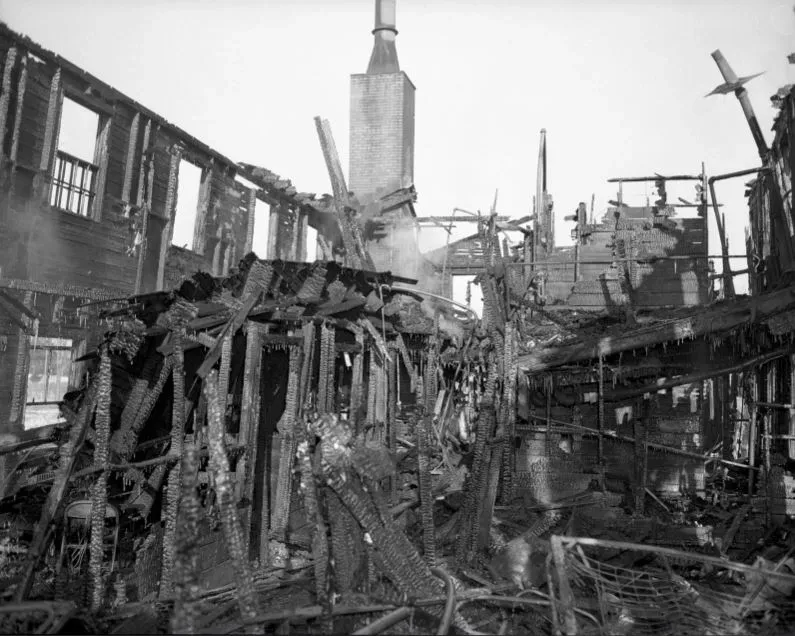
1947 BARRACKS FIRE, PINE CAMP NY
THE SUPREME COURT RULING (1950)
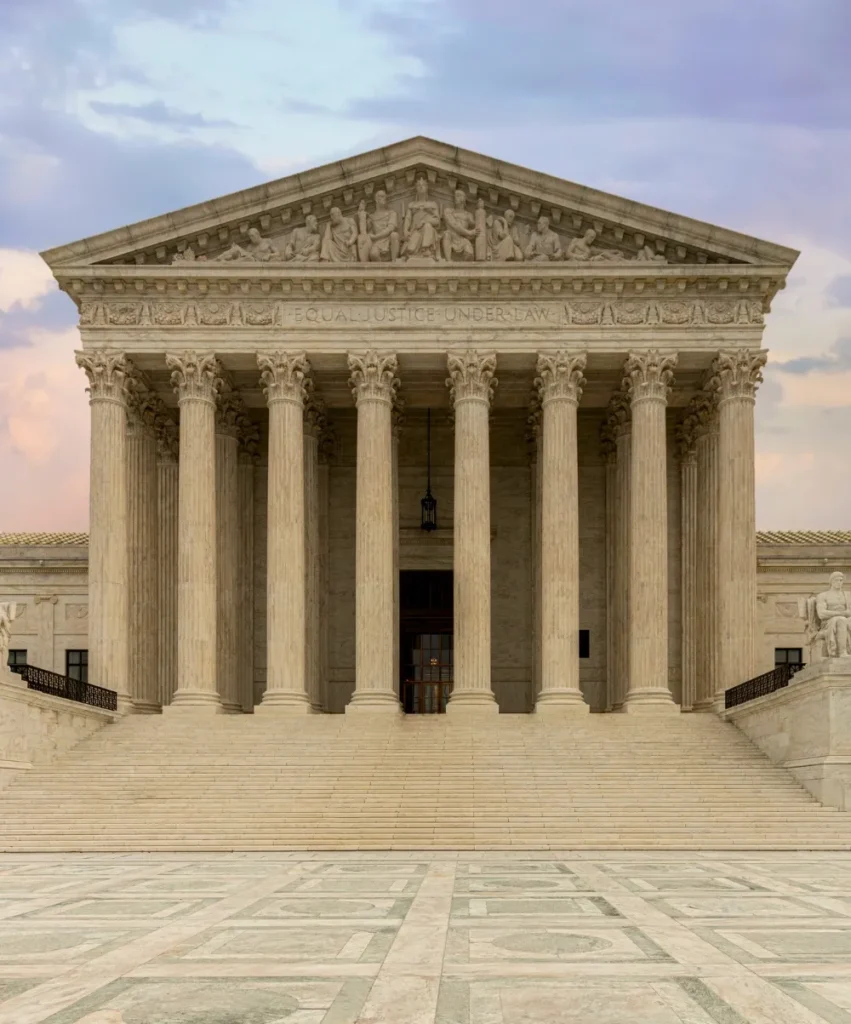
The Feres Complaint
Lt. Feres perished by fire in the barracks at Pine Camp, New York, while on active duty in service of the United States. Negligence was alleged in quartering him in barracks known or which should have been known to be unsafe because of a defective heating plant, and in failing to maintain an adequate fire watch.
The Jefferson Complaint
Plaintiff, while in the Army, was required to undergo an abdominal operation. About eight months later, in the course of another operation after plaintiff was discharged, a towel 30 inches long by 18 inches wide, marked “Medical Department U.S. Army,” was discovered and removed from his stomach. The complaint alleged that it was negligently left there by the army surgeon.
The Griggs Complaint
the District Court dismissed the complaint, which alleged that while on active duty, he met death because of negligent and unskillful medical treatment by army surgeons.
Read the Original Court Opinion
CARMELO RODRIGUEZ MILITARY MEDICAL ACCOUNTABILITY ACT OF 2009
H.R. 1478 would amend the Federal Tort Claims Act (FTCA), by adding a new section 2681 to chapter 171 of title 28 of the United States Code, to allow service members to sue for damages when they are harmed by medical malpractice committed by government employed or -directed healthcare providers. This will ensure accountability in the military medical system, extending to active duty military service members and their families rights that civilians currently possess. Section 2681 would not apply to ‘‘any claim arising out of the combatant activities of the Armed Forces during time of armed conflict.’’ Under current law, the FTCA already prohibits claims ‘‘arising out of the combatant activities . . . during time of war.’’ But this exclusion has been interpreted to apply only to combatants.
The Carmelo Rodriguez Military Medical Accountability Act of 2009: confers exclusive jurisdiction on the Federal courts to hear suits arising in tort against the United States, subject further to the FTCA. The FTCA itself provides that the ‘‘United States shall be liable, respecting . . . tort claims, in the same manner and to the same extent as a private individual under like circumstances. . . .’’ 28 U.S.C. § 2674. 6 28 U.S.C. § 2674;
SGT. CARMELO RODRIGUEZ USMC

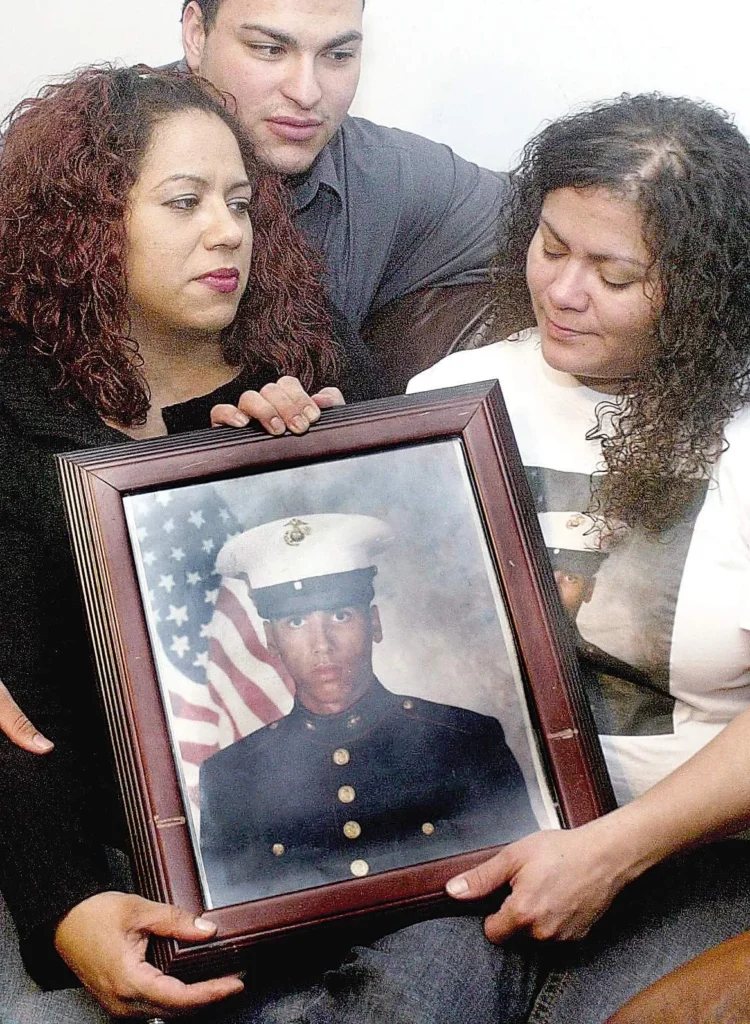
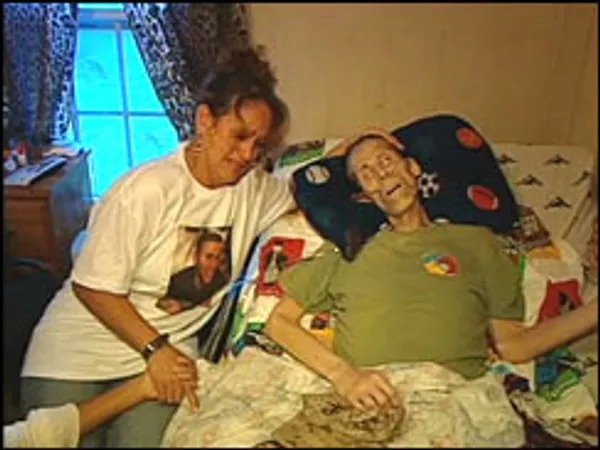
RICHARD STAYSKAL MEDICAL ACCOUNTABILITY ACT (2020)
Under the National Defense Authorization Act that became law in December 2019, current members of the military now may file an administrative claim for medical malpractice if they have suffered injury or death due to the negligence of a federal employee providing medical, dental or health care.
This alternative to a lawsuit is only available to active-duty military and must be filed within two years from the time they first learned of the injury.
Named for SFC Richard Stayskal, whose lung tumor was misdiagnosed and now suffers from terminal lung cancer. In 2017, Stayskal was diagnosed with pneumonia by military physicians. By the time the cancer was correctly diagnosed, it was advanced and had spread to other organs.
Further Reading
INTERIM FINAL RULE SEC 731 NDAA FY2020 MEDICAL MALPRACTICE
CONGRESSIONAL AND SENATE RESPONSE TO INTERIM FINAL RULE
COMMITTEE ON ARMED SERVICES
Feres Doctrine – A Policy in Need of Reform?
FERES DOCTRINE EXPERTS

Daniel Maharaj
Attorney Daniel Maharaj is an expert on the Feres Doctrine, the Federal Tort Claims Act and has extensive experience in resolving cases with both the Department of Defense (DoD) and Veterans Administration (VA).
Daniel is a founding partner of the Solomon, Maharaj & Kasimati, P.A.
SM&K is dedicated to advocating for Federal employees, members of the Armed Forces, Veterans, and their families.
